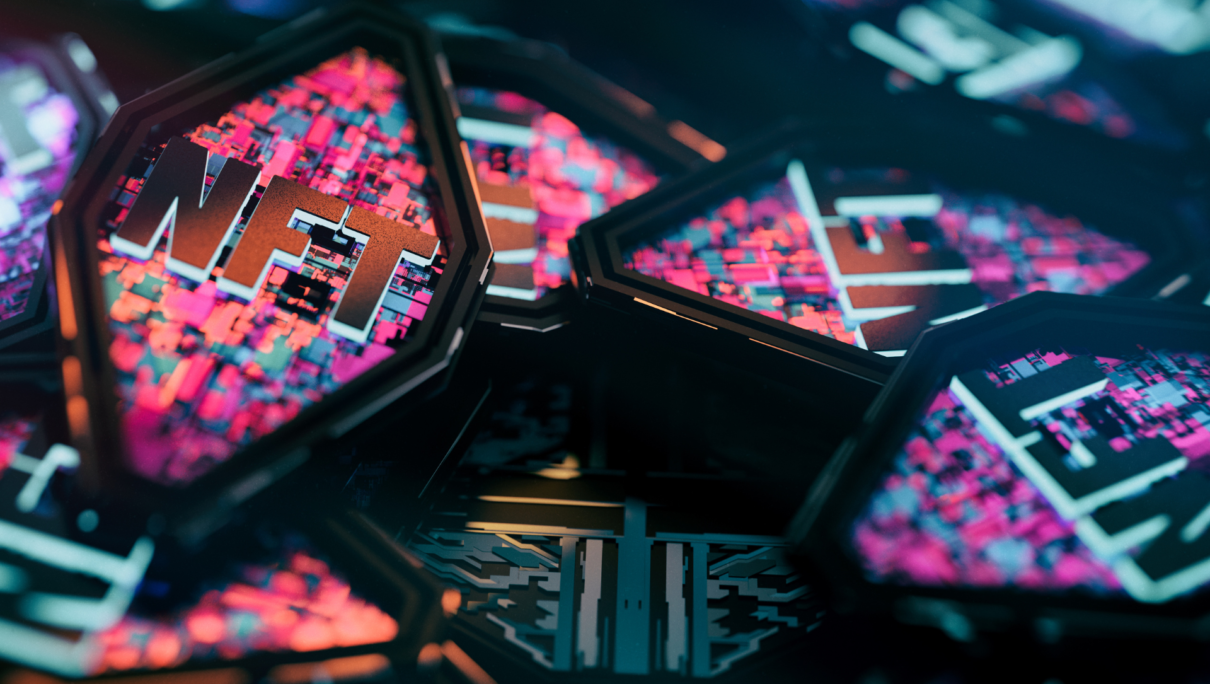Although the technology has been around for a while, NFTs took off in 2020 and have been growing in popularity ever since, particularly in the digital art world.
In the realm of digital innovation, one technology took the world by a storm, captivating both creators and collectors alike: Non-Fungible Tokens, or NFTs. While the concept has been brewing for some time, it was in 2020 that NFTs truly skyrocketed, setting the stage for an unprecedented surge in popularity that shows no signs of slowing down.
Undeniably, NFTs have unlocked a new world of possibilities, especially within the digital art sphere, leaving enthusiasts and investors buzzing with excitement. However, alongside the excitement, NFTs have faced criticism for their volatility, speculation, and susceptibility to scams. In this article, we aim to provide you with a comprehensive understanding of NFTs and what you need to know about them.
What are Non-Fungible Tokens (NFTs)?
At the heart of the NFT frenzy lies a fundamental concept – the uniqueness of Non-Fungible Tokens. Unlike cryptocurrencies such as Bitcoin or Ethereum, where each token is interchangeable and holds the same value, NFTs are one-of-a-kind and indivisible digital assets.
Think of NFTs as the digital certificates of authenticity for digital or tangible items. They are created and recorded on blockchain networks, providing indisputable proof of ownership and provenance. This blockchain-based feature is what sets NFTs apart, granting creators and collectors a secure and transparent system to verify the uniqueness and history of each token.
Primarily, NFTs have revolutionized the world of digital art, enabling artists to tokenize their creations and sell them as unique pieces in a market previously dominated by copies and reproductions. Now, every brushstroke, pixel, or detail holds a distinct value, providing artists with an unprecedented way to monetize and showcase their work.
Apart from art, NFTs have found applications in various other domains. Collectibles, virtual real estate, music, videos, virtual fashion, and even tweets have been tokenized as NFTs, broadening the possibilities and potential impact across industries.
To better understand NFTs, it’s crucial to grasp the concept of smart contracts. These self-executing contracts are at the core of NFT functionality, facilitating transactions and ensuring that creators receive royalties when their NFTs are resold in the secondary market. This feature empowers artists and content creators by enabling them to earn ongoing income from their creations, even after the initial sale.
How do NFTs work?
To comprehend the inner workings of NFTs, we must first peel back the layers of blockchain technology. At its core, blockchain serves as a decentralized and transparent digital ledger that records transactions in a secure and immutable manner.
NFTs harness the power of blockchain by utilizing smart contracts, which are self-executing agreements with predefined rules. These contracts govern the creation, ownership, and transfer of NFTs, ensuring a seamless and trustless process.
Let’s break down the key steps in the lifecycle of an NFT:
- Creation: The process begins with an artist or creator minting an NFT. This involves uploading their digital artwork, music, or any other digital asset onto a compatible NFT platform. Once uploaded, the asset is tokenized, and a unique digital certificate is generated, becoming the NFT.
- Ownership and Verification: Each NFT carries a distinct and irrefutable digital signature, making it unique and easily distinguishable from any other token. This digital signature serves as proof of ownership and authenticity, as it is permanently recorded on the blockchain, leaving an indelible trail of ownership history.
- Purchasing and Trading: NFTs can be bought and sold on various online marketplaces or NFT platforms, such as OpenSea or Axie Infinity. These transactions are facilitated through the use of cryptocurrencies, usually Ethereum (ETH). When a buyer purchases an NFT, the corresponding cryptocurrency is transferred to the seller’s wallet, and the ownership of the NFT is transferred to the buyer’s wallet.
- Royalties and Smart Contracts: One of the revolutionary features of NFTs is the ability to program smart contracts that entitle creators to receive royalties from secondary sales. When an NFT is resold on the marketplace, the smart contract automatically distributes a percentage of the sale value back to the original creator.
- Interoperability: NFTs are designed to be interoperable across different platforms and applications. This allows creators and collectors to trade and showcase their NFTs seamlessly, regardless of the specific marketplace or platform where the NFT was initially minted.
- Storage and Wallets: NFTs are stored in digital wallets that are compatible with the blockchain network on which they were minted. These wallets act as secure vaults, holding the NFTs and providing the owner with full control over their assets.
Why do NFTs matter?
In the vast landscape of technological advancements, NFTs stand out as a game-changer, redefining the very essence of ownership and value in the digital world. Several factors contribute to the significance of NFTs and why they matter:
Uniqueness and Authenticity
NFTs bring the concept of ownership into the digital realm, granting a sense of authenticity and uniqueness to digital assets. With each NFT representing a one-of-a-kind item, creators can tokenize their work, and collectors can confidently own a genuine piece of art or collectible – a process known as asset tokenization.
Empowering Creators
NFTs empower artists, musicians, and content creators by providing them with new monetization avenues. The ability to earn royalties from secondary sales ensures that creators can continue to benefit from the value appreciation of their work, even after the initial sale.
Transparent and Decentralized
Operating on blockchain technology, NFTs offer transparency and decentralization, eliminating the need for intermediaries in transactions. This ensures a direct connection between creators and collectors, fostering a more equitable ecosystem.
Expanding Opportunities
NFTs have unlocked novel opportunities in various industries. From digital art and music to virtual real estate and even tokenizing real-world assets, NFTs have expanded the boundaries of what can be bought, sold, and owned in the digital domain.
Fostering Digital Ownership
NFTs are sparking a cultural shift towards digital ownership. As our lives become increasingly digital-centric, NFTs provide a tangible way to possess and cherish digital assets, bridging the gap between the virtual and physical worlds.
Driving Innovation
The NFT boom has sparked a wave of innovation, encouraging technological advancements in blockchain and digital infrastructure. As the demand for NFTs grows, developers and entrepreneurs are continually refining and expanding the capabilities of blockchain technology.
The criticism behind NFTs
Amidst the meteoric rise of NFTs, there is no shortage of critics voicing concerns and skepticism surrounding this digital phenomenon. While NFTs have garnered immense popularity and excitement, several key criticisms have emerged:
- Environmental Impact: One of the most significant criticisms against NFTs revolves around their environmental impact. Most NFTs are built on blockchain networks like Ethereum, which rely on energy-intensive consensus mechanisms like Proof-of-Work (PoW). This energy consumption has raised alarm bells about the carbon footprint and sustainability of the NFT market.
- Market Volatility and Speculation: The NFT market has experienced wild fluctuations, with prices of certain digital assets skyrocketing and plummeting within short time frames. This volatility has led some to view NFTs as speculative investments, raising concerns about potential bubbles and risks for investors.
- Overhyping of Digital Assets: Critics argue that the current NFT craze might be overhyping the value of digital assets. While NFTs provide authenticity and ownership, the value attributed to some digital art and collectibles seems disproportionate, raising questions about the true worth of these assets.
- Lack of Regulation: The NFT market has seen its fair share of scams and fraudulent activities due to a lack of regulation. With the relatively new and rapidly evolving nature of NFTs, there is a need for clearer guidelines and safeguards to protect both creators and buyers in the marketplace.
NFTs: A Digital Evolution Redefining Ownership
With their ability to grant uniqueness and authenticity, NFTs have unlocked new opportunities for artists, collectors, and investors across various industries. However, amidst the excitement, we must address the challenges surrounding market volatility, environmental impact, and copyright concerns.
As NFTs continue to evolve, they hold the potential to bridge the gap between the virtual and physical worlds, becoming cultural artifacts that represent significant moments in history and creativity. Embracing this digital evolution, we can envision a future where digital ownership is cherished and celebrated, and where technology and creativity converge to unlock endless possibilities.






